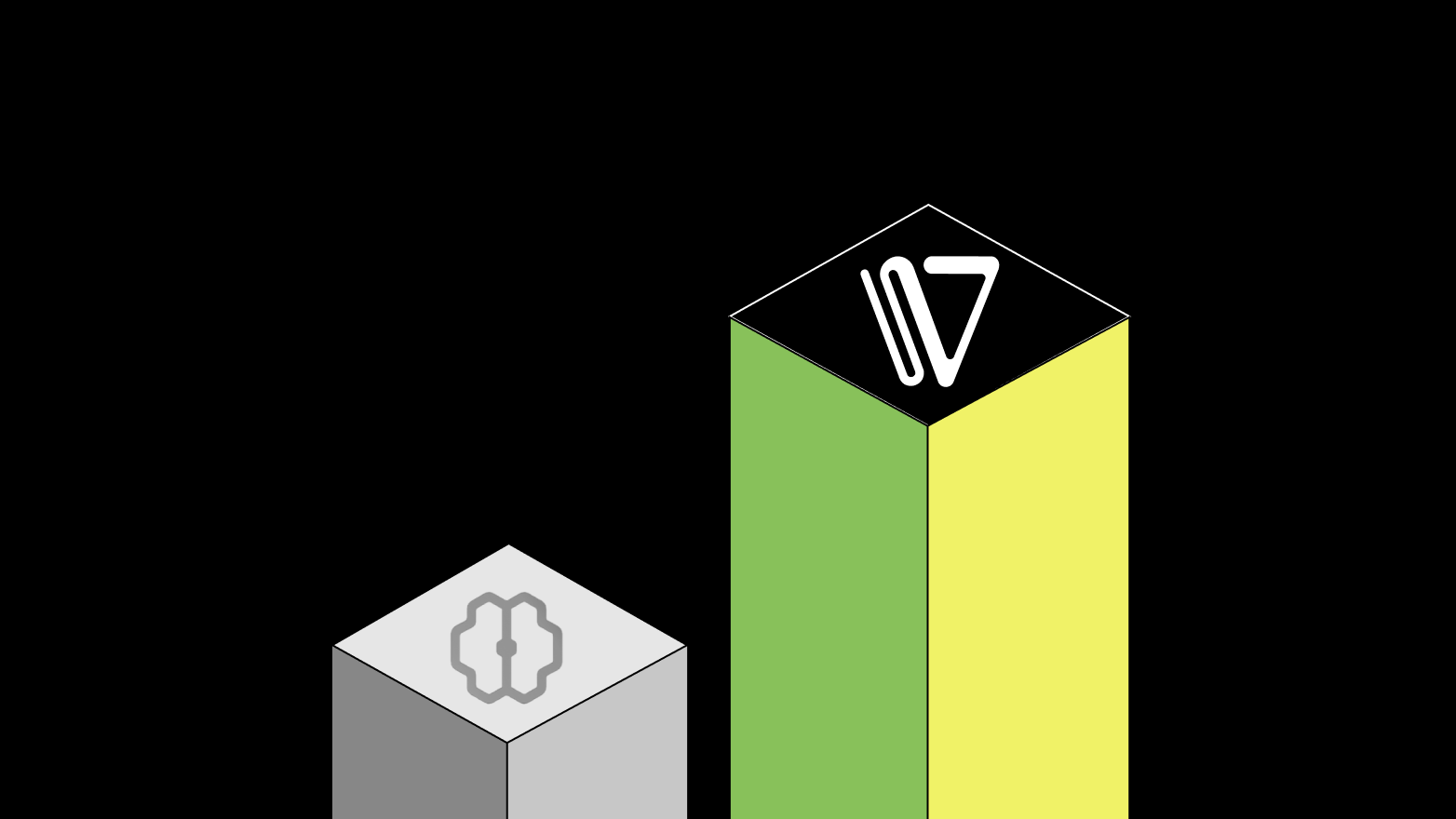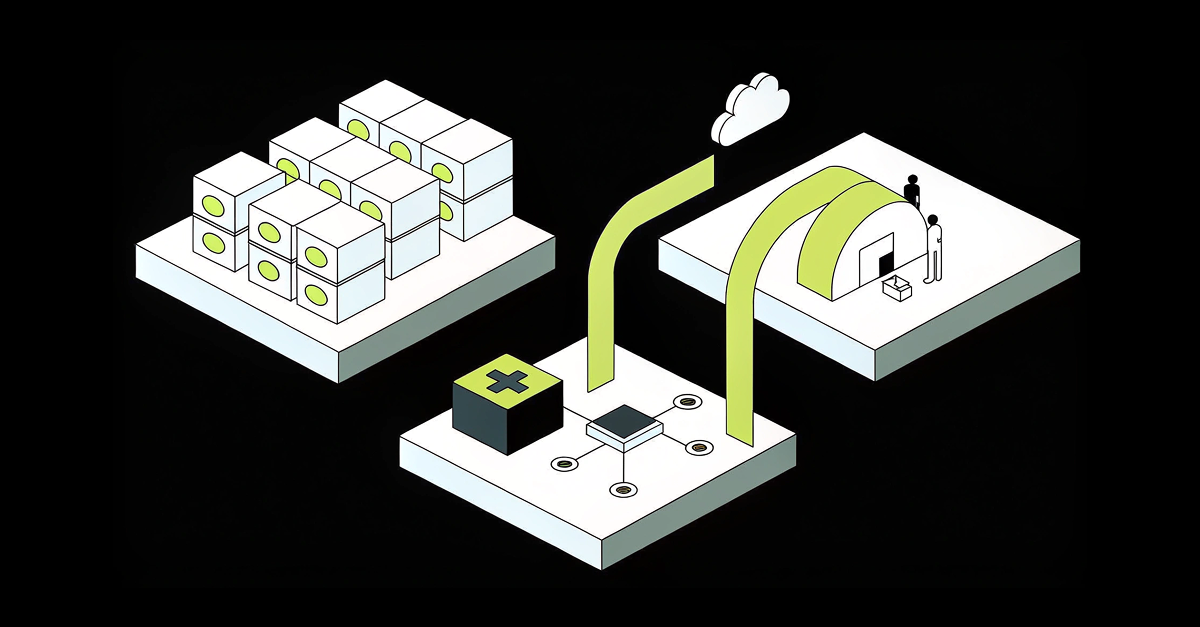Enterprise AI teams are stuck with a tough choice: spend months or years building everything from scratch, rely on cloud vendor platforms like AWS SageMaker, or somehow find a middle ground that doesn't force them to pick sides.
No one ever loves using SageMaker; it has such an underwhelming experience. However, SageMaker appears to solve an important dilemma by providing a complete, integrated ML lifecycle platform. For many organizations, the appeal is simple: put down your corporate credit card and gain access to a suite of machine learning (ML) tools without managing individual components.
But, SageMaker's tools lag years behind open-source innovations. Its "integrated" components require significant custom integration work, and its proprietary approach locks teams into AWS-specific solutions. Meanwhile, the open source AI ecosystem leads in nearly every category, with cutting-edge innovations coming from the community.
Cake flips this whole problem on its head. Instead of forcing you to choose between building everything yourself or getting locked into one vendor, they curate, integrate, and manage hundreds of best-in-class open source components. What you get is what SageMaker keeps promising but fails to deliver: a truly integrated, cutting-edge AI platform that adapts to your needs.
The open source advantage
The evidence is overwhelming: when it comes to AI and ML, open source consistently delivers the most advanced, effective solutions across the entire AI stack.
Consider the trajectory of recent AI breakthroughs. Open source solutions like Milvus, PgVector, and Qdrant were created to handle vector search and RAG applications while cloud vendors were still focused on traditional relational databases. Parameter-efficient fine-tuning with LoRA and QLoRA adapters appeared from their birth as open-source demonstrations as part of groundbreaking papers. Frameworks that are built on these research community PEFT breakthroughs, including Unsloth, TRL, and LLama Factory, helped reduce training costs by up to 90% or more, months or years before appearing in cloud platforms. Even the entire category of agentic workflows—from LangChain to CrewAI to AutoGen—originated as open source, driven by practitioners solving real problems rather than product managers planning roadmaps.
"By the time cloud vendors evaluate, integrate, and release new capabilities, the open source community has often moved on to the next breakthrough."
This pattern repeats across every category of AI tooling. By the time cloud vendors evaluate, integrate, and release new capabilities, the open source community has often moved on to the next breakthrough. The result is that teams using cloud-native tools are perpetually behind the curve, implementing last year's solutions while open source leverages this year's innovations.
Why open source dominates modern AI
Open source's dominance in AI stems from two fundamental realities that cloud platforms struggle to address: the need for customization and the speed of innovation.
Real-world AI applications have something of a long tail of required functionality. They require unique combinations of capabilities that standardized platforms struggle to anticipate as they focus on one-size-fits-all. Everyone's trying to do something that's just a bit different, and the basics are never enough for sophisticated use cases. Everyone would build their AI platform like Google if they could only afford to hire the 300 engineers it would take to build something custom. That’s why open source's modularity is so essential. Teams can integrate the best document processing pipeline with the most effective vector database and the most efficient inference engine, choices that are impossible within proprietary platforms.
You also see this advantage when breakthrough research emerges. Whether it's a new attention mechanism, efficient quantization technique, or novel agent architecture, open source implementations typically appear within weeks of publication, often contributed by the original researchers themselves. In contrast, cloud vendors require months of evaluation followed by years of implementation and enterprise certification processes. This means that by the time SageMaker offers a particular AI capability, it may be 2-4 years old.
SageMaker's promises vs. Cake's delivery
SageMaker markets itself as a comprehensive platform that eliminates ML infrastructure complexity. While this promise is compelling, the reality reveals significant gaps that Cake addresses.
Complete ML lifecycle management: SageMaker claims to handle every step within a single platform, but its tools are consistently "several years behind state of the art." Cake curates hundreds of best-in-class open source components, giving teams access to cutting-edge innovations within weeks of publication rather than waiting years for AWS integration.
Seamless integration: Despite marketing claims, SageMaker's components aren't truly integrated—teams must "spend the time to get them to work together," turning engineers into integration specialists. Cake applies the "Red Hat model" to AI infrastructure, providing pre-integrated components that work together seamlessly from day one.
Enterprise-ready features: While SageMaker offers compliance and governance features, it doesn't always have access to the cutting-edge features that modern AI development requires, especially compared to alternatives. Cake delivers enterprise-grade security and governance while maintaining access to the most advanced open source tools, avoiding the functionality gaps that plague proprietary platforms.
Managed infrastructure: SageMaker promises to abstract complexity but locks teams into AWS-specific solutions. When breakthroughs emerge in open source, users face a difficult choice: wait years for integration or abandon their investment. Cake runs in your infrastructure while preserving the flexibility to adapt as requirements evolve, delivering the "Google model" of custom AI infrastructure without requiring 300 engineers.
The result is what experts call a "general cycle of disillusionment"—teams must wait three or four years for cloud vendors to integrate innovations, turning SageMaker's apparent comprehensiveness into a strategic constraint.
Cake co-founder and CTO Skyler Thomas discussed scaling real-world RAG and GraphRAB systems using open-source technologies at the 2025 Data Council
How open source AI translates to business impact
Cake's architectural differences translate into measurable business advantages that directly impact team productivity, operational costs, and strategic flexibility.
Speed-to-market that changes everything
The most immediate advantage teams experience with Cake is the dramatic reduction in time-to-production. Where SageMaker deployments typically require months of configuration, integration work, and troubleshooting, Cake helps teams move from concept to production in days or weeks.
This speed advantage stems from Cake's pre-integrated approach. Rather than spending weeks figuring out how to connect SageMaker's various components, teams can immediately access tools that work together seamlessly. The equivalent of 6-12 months of engineering work becomes available on day one, allowing teams to focus on innovation rather than infrastructure plumbing.
Cost efficiency that scales
Cake's cost advantages compound over time, delivering savings that directly impact the bottom line. Most significantly, Cake runs in customers' own Kubernetes clusters rather than relying on expensive, marked-up ML instances that cloud providers charge premium prices for.
Industry data shows that teams typically save 30-50% on compute costs by avoiding the markup that AWS applies to SageMaker instances. These savings become more significant as teams scale—a difference that can represent hundreds of thousands of dollars annually for organizations running substantial AI workloads.
Beyond direct compute savings, Cake eliminates the hidden costs of vendor lock-in. Teams avoid expensive data egress fees when moving between cloud providers, don't pay markup on storage access, and maintain the flexibility to optimize their infrastructure spending based on actual needs rather than vendor pricing structures.
"Industry data shows that teams typically save 30-50% on compute costs by avoiding the markup that AWS applies to SageMaker instances. These savings become more significant as teams scale—a difference that can represent hundreds of thousands of dollars annually for organizations running substantial AI workloads."
Strategic vendor independence
Perhaps most importantly for long-term success, Cake provides vendor independence that preserves strategic flexibility. While SageMaker locks teams into AWS-specific solutions, Cake's multi-cloud architecture allows organizations to deploy workloads wherever they make the most sense—whether that's optimizing for cost, compliance, or performance.
This flexibility matters more than you might think, especially as your AI needs change. Teams can move workloads to specialized hardware as it becomes available, take advantage of pricing differences between cloud providers, or meet changing compliance requirements without rebuilding their entire infrastructure.
The vendor independence also future-proofs AI investments. Rather than being constrained by AWS's product roadmap and pricing decisions, organizations maintain control over their AI infrastructure evolution. When breakthroughs emerge or business requirements change, teams can adapt their stack without being limited by vendor-specific implementations.
Building for the future of AI
SageMaker can work for organizations with simple, vanilla ML use cases and heavy AWS ecosystem investment. If you're building basic recommendations or classification models, prioritize procurement simplicity over technical excellence, and can tolerate integration overhead and innovation lag, SageMaker may meet your basic requirements.
However, Cake is the clear choice for organizations where AI represents a competitive advantage. Teams building cutting-edge applications (e.g., sophisticated RAG systems, agentic workflows, or custom architectures) require the flexibility and innovation speed that only best-in-class open source platforms provide.
The choice between SageMaker and Cake ultimately comes down to a fundamental question: Will your organization be constrained by what a single cloud vendor decides to provide, or will you harness the innovation speed of the broader AI ecosystem?
SageMaker offers procurement simplicity but at the cost of innovation lag, integration overhead, and vendor lock-in. Cake delivers what industry experts call "the power and the speed"—access to cutting-edge open source innovations with enterprise-grade integration and reliability.
The infrastructure decisions you make today will determine your AI capabilities for years to come.



.png)